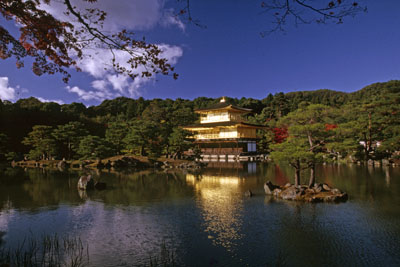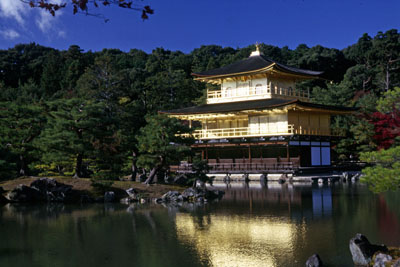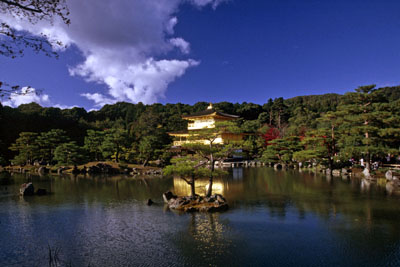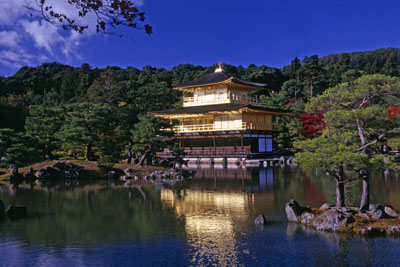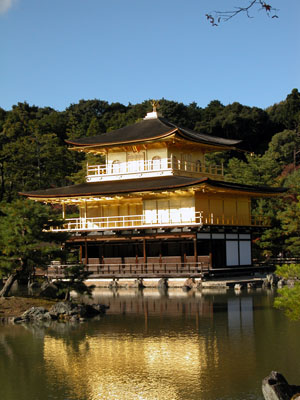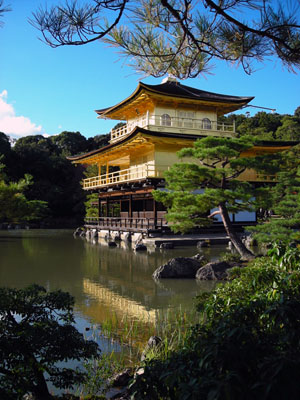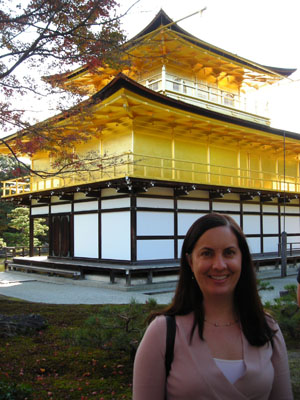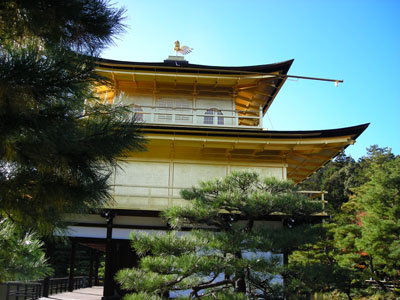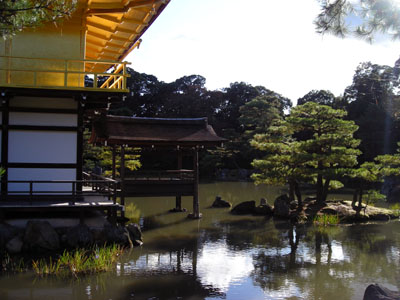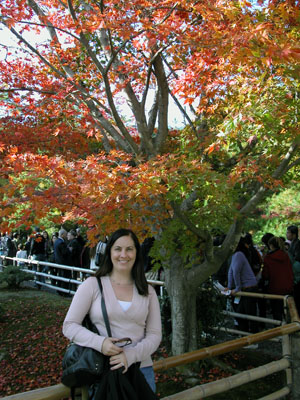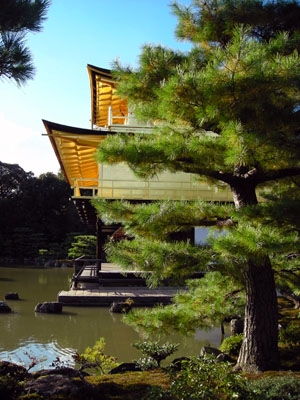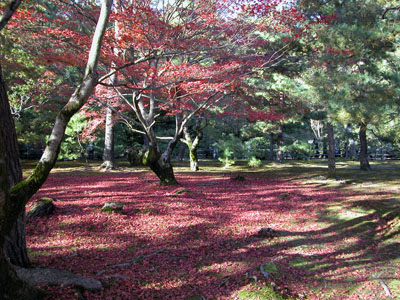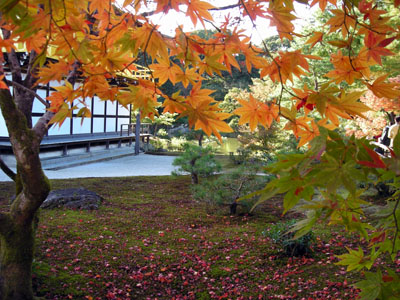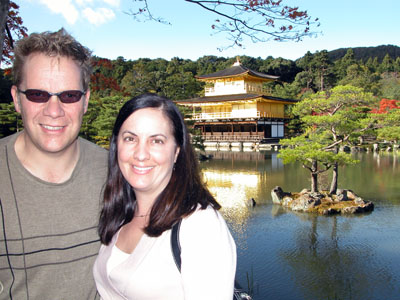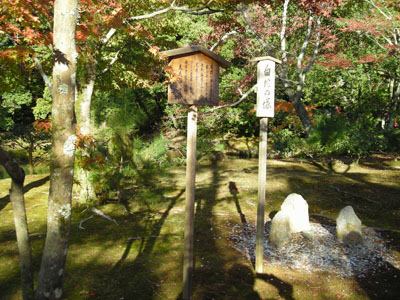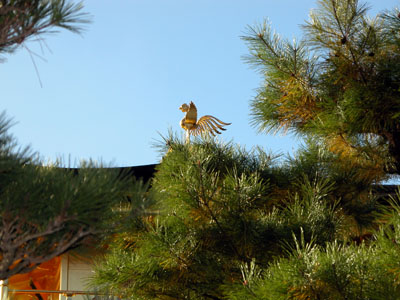Is this not one of the most idyllic settings you have ever seen? Kinkaku-ji is a must see when visiting Kyoto. Kinkaku-Ji means "Temple of the Golden Pavilion" and it's pretty obvious how it got its name. The temple was constructed in 1398 by Yoshimitsu, the third Ashikaga shogun as a country estate. His son, Ashikaga Yoshimochi turned it into a Zen Buddhist temple. It was burned down twice in the 15th century - during the Onin War - but was rapidly rebuilt.
Unfortunately, what we see today is a reproduction built in 1955. The original was set ablaze in 1950 by an insane monk named Hayashi Yoken who was hell bent on committing suicide. He survived but his mother subsequently took her own life.
Each floor of the three story pavilion is built in a different architectural style. The first floor is a large room surrounded by a verandah in the shinden-zukuri (or shinden) style, a sort of aristocratic residential form of Japanese architecture. The second floor is the Buddha hall. It is done in buke-zukuri, a style reserved for the Samurai. The third floor is traditional Chinese Zen Buddhist architecture. And yes, that is real gold leaf that adorns the exterior.
Once again, Asian Historical Architecture has a wonderful website with a history and architectural details. The temple is a UNESCO World Heritage site.
All photos on this page are originals by & copyrighted by Daren Willden, unless otherwise stated. All rights reserved.
